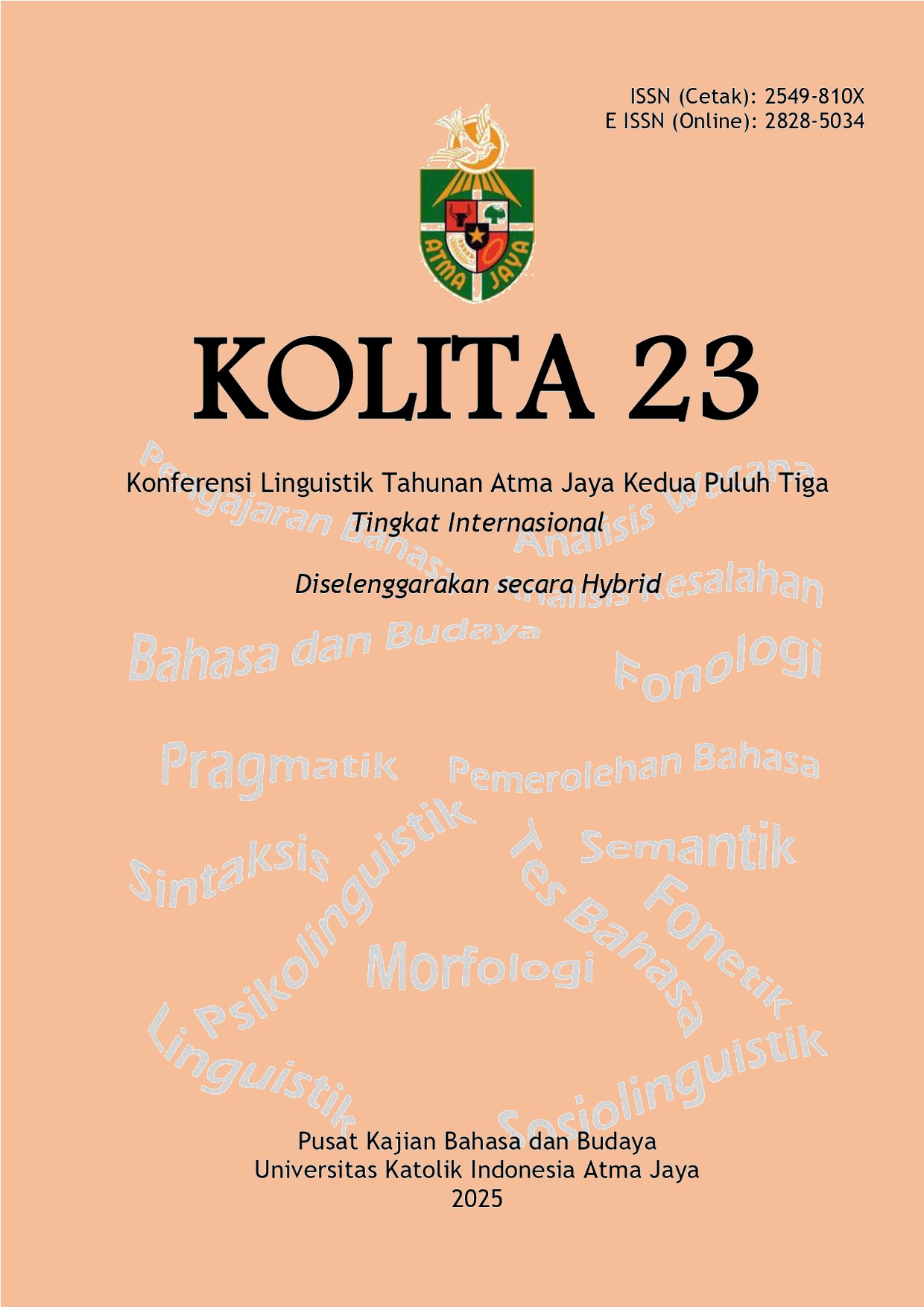DISPARITY OF THE ENGLISH FORMAL AND INFORMAL LANGUAGE ON THE STUDENTS’ SPOKEN TEXT : A SOCIOPRAGMATIC PERCEPTIONS
DOI:
https://doi.org/10.25170/kolita.v23i23.7162Keywords:
Formal Language, Informal Language, Sociopragmatics, Nonverbal elements, DictionsAbstract
Recent phenomena have been identified among students at the university level, such as the tendency to use an informal language style, which has become a normal and common one, even though the context situation requires a very formal context. The students prefer to use a casual and informal style over a formal one. This is, of course, not appropriate since in formal contexts and situations, a formal language including nonverbal elements is used.
The study analyzes the disparity in the use of formal and informal English language, including the nonverbal elements used by the students of the English department in their fourth semester of the academic year 2024-2025 with the number of seventy seven students as the subjects of the study. The objectives of this study are to describe the perceived characteristics of English formal language used by the students in their formal spoken language, as well as the nonverbal elements from the point of Sociopragmatic views, thus explaining the factors of the difficulties the students face. Along with the descriptions of the formality, an implementation of some strategies through theoretical concepts on Pragmatics and Sociolinguistics is also conducted.
The method used in this study is a descriptive qualitative design with some process phases applied, starting with conducting a direct observation in the classroom during the lecture of Advanced Interpretation taking place. Then it is also followed by a deep interview with the students and some lecturers in order to gain some preliminary data about the use of English formal language expressions. The data sources are the classroom activities, especially classroom presentations, discussions, and Q & A sessions during the lecture. The data are all the verbal and nonverbal English language showing formality. After that, there is an exposure to some theoretical concepts on Pragmatics and Sociolinguistics. The strategic explanations will be introduced to the students so that they can identify the most challenging factors that make them feel discomfort and unwilling to use the formal English language and nonverbal elements in very formal contexts and situations. By conducting the study there are some significant contributions such as the use of English formal expressions and dictions is used, the nonverbal elements such as the good tone of speaking, intonation, pause, eye contact, body gestures are also used, thus they contribute to enhance students' ability to use the formal English language and nonverbal elements in a formal situation.






